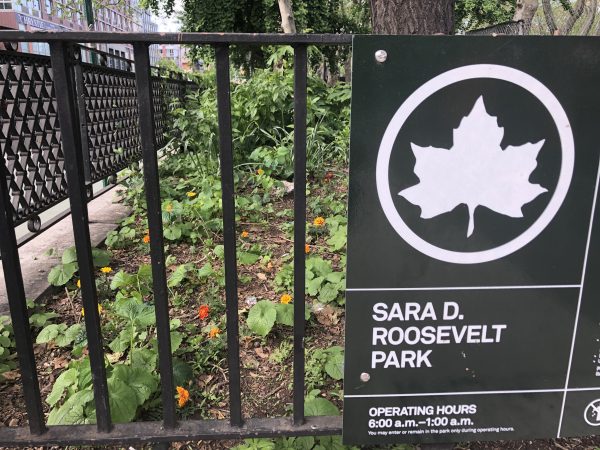Fordham University Bernadette Corbett – Urban Parks
“Urban parks provide environmentalbenefits to their neighborhoods. Namely, trees within urban parks provide many environmental benefits to the city. Trees help reduce air pollution, treat polluted water, and provide cooling effects to the city. These environmental benefits also help reduce a city’s overall costs. “The U.S. Forest Service calculated that over a 50year lifetime one tree generates $31,250 worth of oxygen, provides $62,000 worth of air pollution control, recycles $37,500 worth of water, and controls $31,250 worth of soil erosion” (Sherer). Thus, urban parks are a smart investment for city government and taxpayers.
In 1994, trees in New York City removed approximately 1,800 metric tons of air pollution. Trees can block ozone, sulfur dioxide, particulate matter, carbon monoxide and nitrogen dioxide from reaching the earth. The roots and soil of trees are natural filters for water, and can effortlessly treat polluted particulate matter in water. Trees can also absorb nitrogen, phosphorus, and potassium from the soil, chemicals that otherwise would pollute waterways. Urban parks also help treat stormwater and help control stormwater runoff. Urban parks are actually less expensive and more effective at controlling stormwater runoff than concrete sewers. Instead of letting the water immediately runoff into the sewer systems such as concrete and pavements does, parks absorb the water into the ground. This lessens the amount of water crashing into the draining system. According to the F, “By incorporating trees into a city’s infrastructure, managers can build a smaller, less expensive stormwater management system” (Sherer). A conservation organization called American Forests predicts that trees within urban areas save cities $400 billion in stormwater retention facilities. More trees also make summer months more bearable for city residents. The vast amount of glass and concrete within New York City traps all of the suns rays, turning the city into an oven in the summer months. “The evaporation from a single tree can produce the cooling effect of ten roomsize air conditioners operating 24 hours a day” (Sherer). Thus, trees stimulate a cooling effect within cities which can make the city much more livable during hotter months.”


